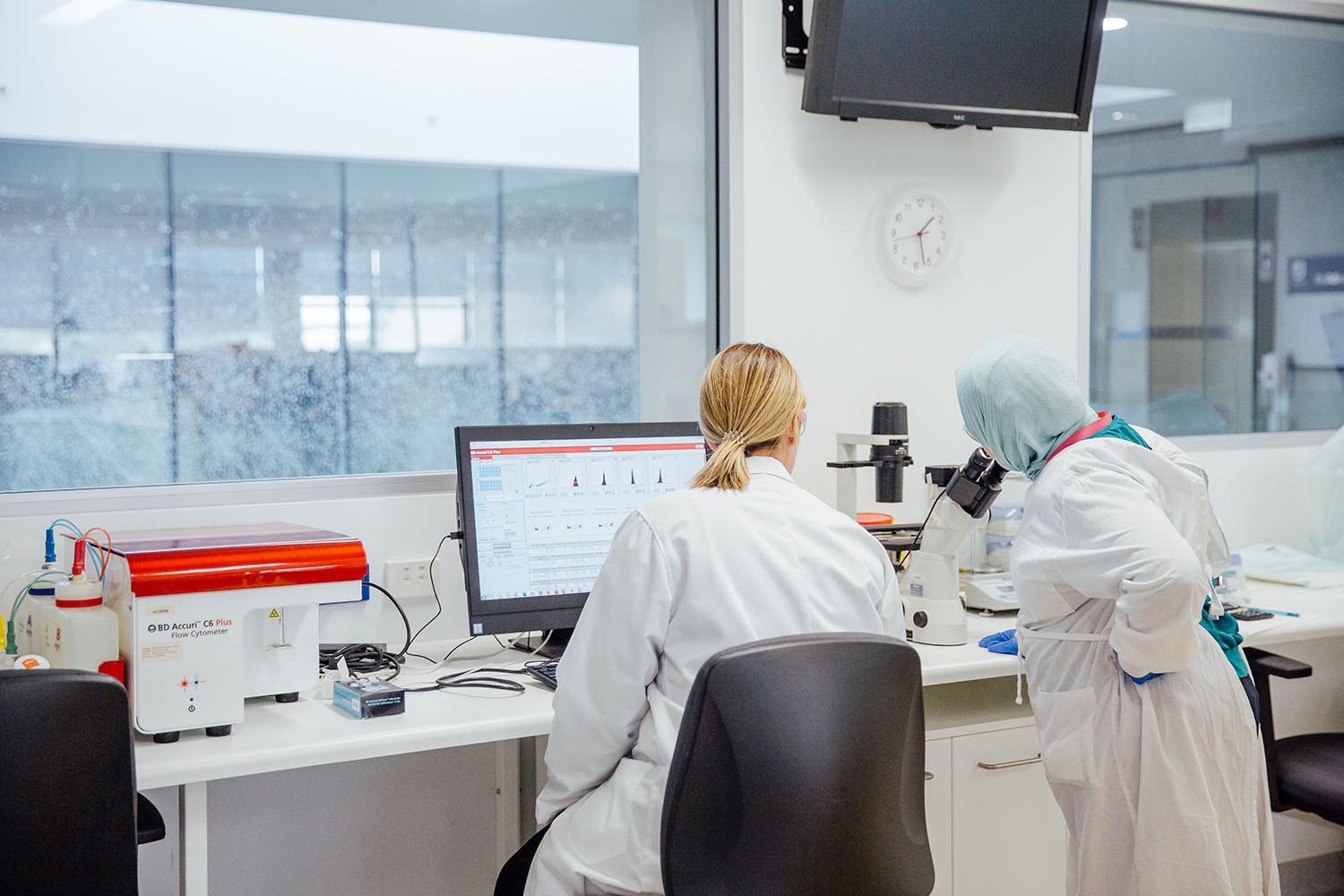CYPATCH is a new contender in active wound dressings, pairing the Cymerus® cell technology to tackle major challenges in wound care, including diabetic foot ulcers (DFU). TekCyte’s CYPATCH is a proprietary surface-coating for wound dressings, optimised to deliver adult mesenchymal stem cells directly to the wound bed, accelerating the healing process. This coating technology has been exclusively licensed to Cynata Therapeutics Limited (ASX: CYP or “Cynata”).
For many patients with diabetes, wounds do not heal easily due to reduced blood flow, especially in the legs and feet. These wounds then become easily infected further delaying the healing process. With over 34 per cent of diabetic patients developing these chronic wounds, there are over half a million patients in Australia suffering from ulcers, with most occurring on their feet. If these wounds are not treated, they can lead to life threatening sepsis and/or amputation. CYPATCH is a patented coating technology developed to heal difficult wounds like DFU, by delivering stem cells to the wound, that produce a cocktail of factors to kickstart the healing process. The coating is designed to allow live cells to separate from the dressing and enter the wound, aiding with rejuvenation and the healing process, which is extremely beneficial for non-healing wounds like DFU.
For medical product manufacturing, there is a long process and timeframe from the original research to commercial product, and the story behind CYPATCH is no different. In 2013, the initial project was funded by the Cooperative Research Centre for Cell Therapy Manufacturing (CTM CRC) and led by Dr Louise Smith, former Lecturer in Advanced Materials and Research Fellow at University of South Australia. The project co-existed with a sister project, led by Professor Alison Cowin, Professor of Regenerative Medicine at the University of South Australia, that assisted with the pre-clinical testing of the wound dressing technology. The initial team was rounded off with Prof Rob Short, Post-Doctoral Researchers, Dr Giles Kirby and Dr Stuart Mills, and Plasma Physicist Dr Andrew Michelmore, all of whom are inventors on the patent.
The key to the dressing was finding the ‘sweet spot’ where the cells attached to the dressing but not too strongly that they wouldn’t come off again and enter the wound. After this initial research, the team had the building blocks needed to bring the research to clinical testing for the treatment of DFU’s, however, it required some fine tuning. Once this was successfully completed the pre-clinical testing of the new dressing in both normal and diabetic mouse models were undertaken and showed the technology had potential as a new active wound dressing.

Merging with TekCyte
With a research team who believed in the potential of the product, and armed with positive animal model data, the project was assigned to TekCyte, bringing together the original lead researchers with new medical researchers to generate commercial interest in the technology.
In 2017, a collaborative proof-of-concept study was conducted by TekCyte and Cynata, supported by CTM CRC, using Cynata’s Cymerus® cells, to see if CYPATCH would work to deliver their cells. In preclinical studies, comparing the rate of wound healing, the combination of CYPATCH plus Cymerus® cells outperformed other CYPATCH + cell combinations. With the research underway and a solid product ready for more extensive testing, the team at TekCyte and Cynata set a course to establish the manufacturing process for the combination product that would be suitable for human clinical trials.
The Clinical Trials
In 2021 Cynata licensed the CYPATCH technology from TekCyte with the aim of conducting a first-in-man trial of CYPATCH with Cymerus® cells. In December 2021, Cynata announced the commencement of the clinical trial, which aims to treat 30 adult patients with DFU, comparing CYPATCH populated with Cynata’s Cymerus® cells (CYP-006TK) with the standard care. The trial will focus on two primary outcomes. Firstly the safety of the application, and secondly the rate of healing of the wound, together with monitoring pain and quality of life at 12 and 24 weeks after treatment.
The trial will take place at Royal Adelaide Hospital and The Queen Elizabeth Hospital, Adelaide. The clinical trial will be overseen by Professor Robert Fitridge, Professor of Vascular Surgery at the University of Adelaide, and Consultant Vascular Surgeon with the Central Adelaide Local Health Network. Cynata plans to complete the trial in 2022.
With a strong potential for improving the lives of many diabetic patients suffering from DFU, the CYPATCH coating delivering Cymerus® cells is on track to becoming a game changer in the advanced wound care industry.



